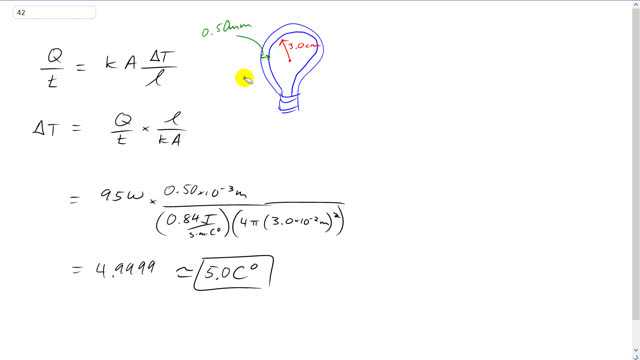
A 100-W lightbulb generates 95 W of heat, which is dissipated through a glass bulb that has a radius of 3.0 cm and is 0.50 mm thick. What is the difference in temperature between the inner and outer surfaces of the glass?

In order to watch this solution you need to have a subscription.
This is Giancoli Answers with Mr. Dychko. So, we're assuming this lightbulb is a sphere of radius 3 centimeters and the glass surrounding it has a thickness of half a millimeter, and the rate of heat conduction across this piece of glass is the thermal conductivity of glass times its surface area times the temperature difference between the inside and the outside of the glass divided by its thickness. And we're going to solve for this temperature difference by multiplying both sides by l over kA. And we solve for ΔT. So, the temperature difference across this half millimeter thickness is the rate of heat transfer times by the thickness divided by thermal conductivity times the surface area. So, that's 95 watts of energy dissipated times by 0.5 times 10 to the minus 3 meters, converting the millimeters into meters by multiplying by 10 to the minus 3, divided by 0.84 joules per second meter Celsius degree, thermal conductivity of glass, times by 4π r squared for the surface area of the sphere. So, it's 4π times 3.0 times 10 to the minus 2 meters squared. And this gives about 5.0 Celsius degrees is the temperature difference across this piece of glass.